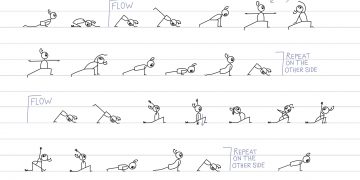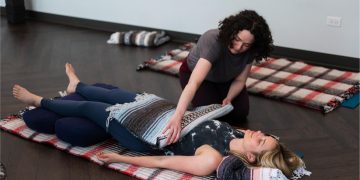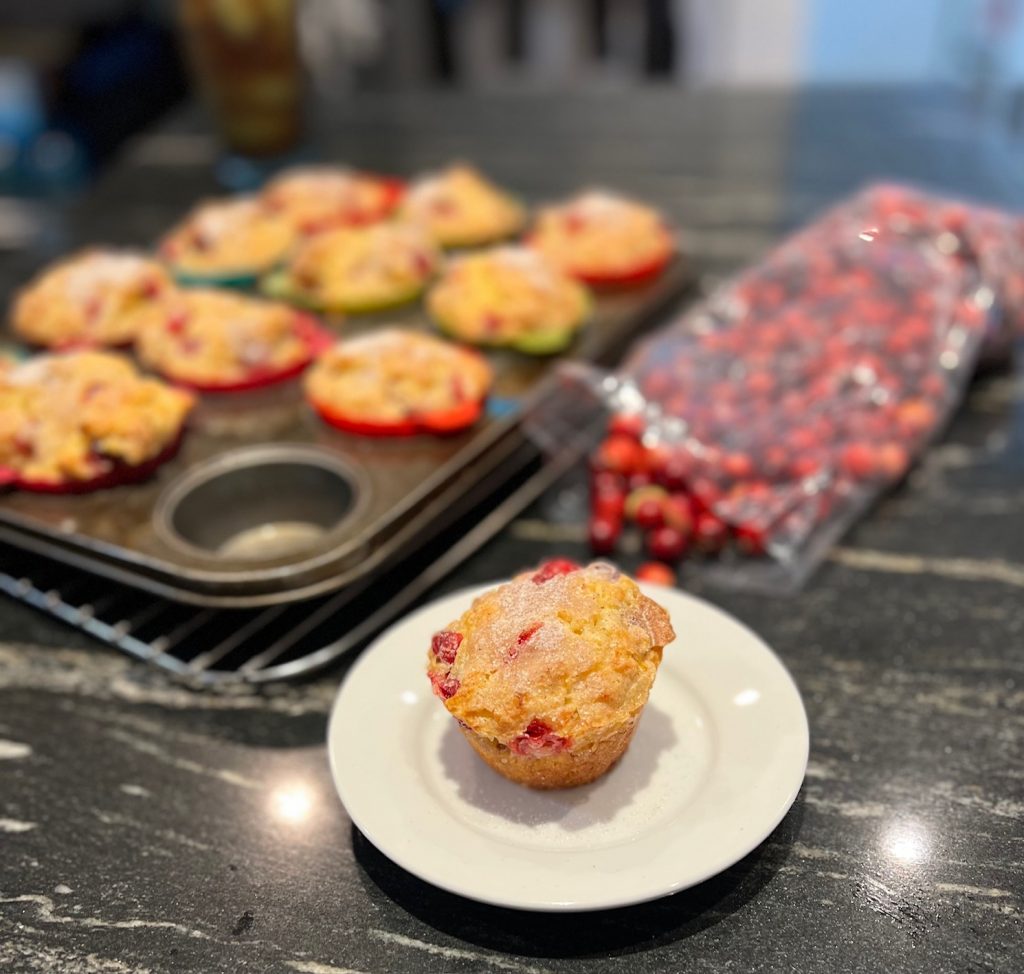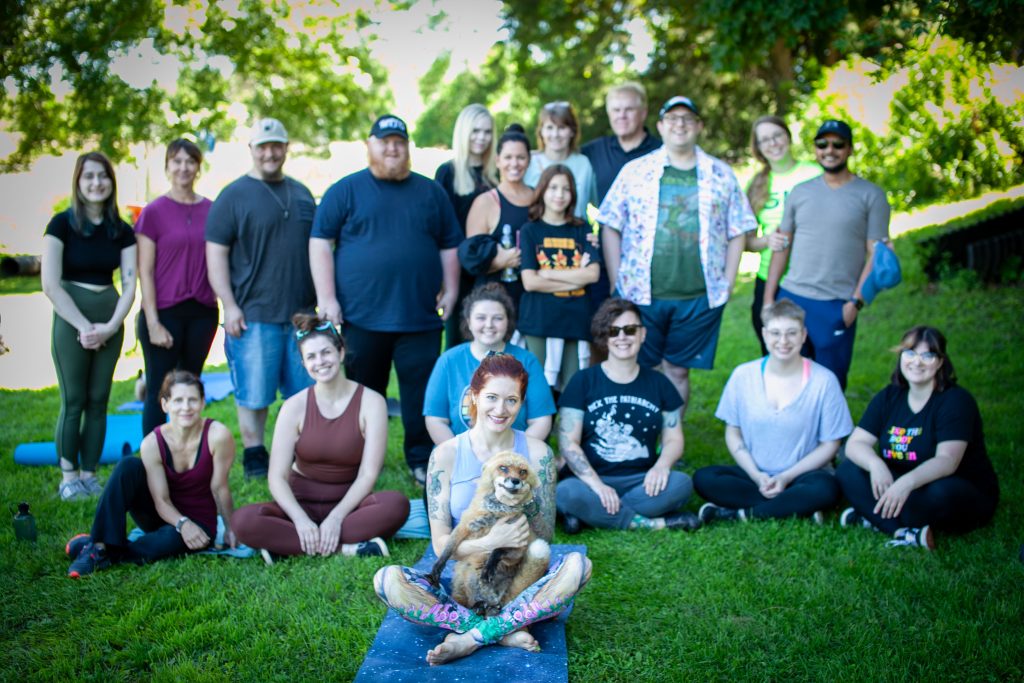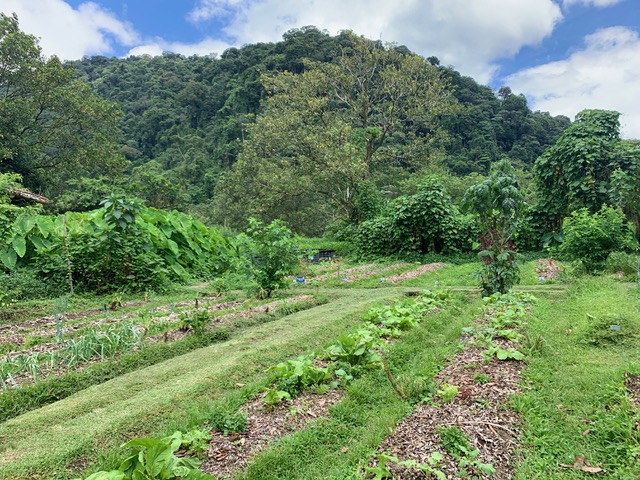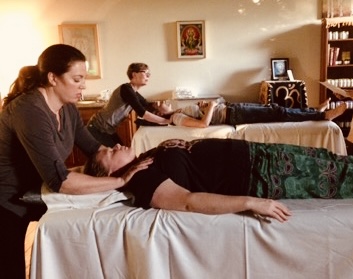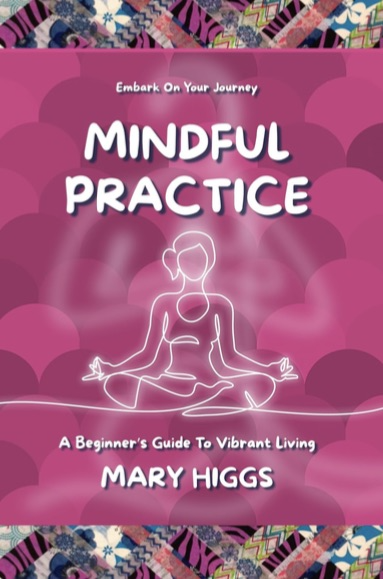Teacher-student relationships carry vast transformative potential. Moving and breathing together, sharing our stories, and being witnessed encourages vulnerability. Attunement, keen observation, skillful communication – and often proximity and touch – expedite the kinesthetic learning yoga offers.
We’re living through remnants of a global pandemic and reckoning with questions from MeToo and social justice movements. With yoga and spiritual communities revealing widespread histories of abuse, we now hold the hope and responsibility of preventing future harm.
How do we keep the intimacy of yoga intact while facing the real damage that’s been done?
Consent is a shared responsibility and an innate skill. We’re actively unlearning oppressive patterns and systems to restore the right relationship within ourselves, and better practice consent in the community.
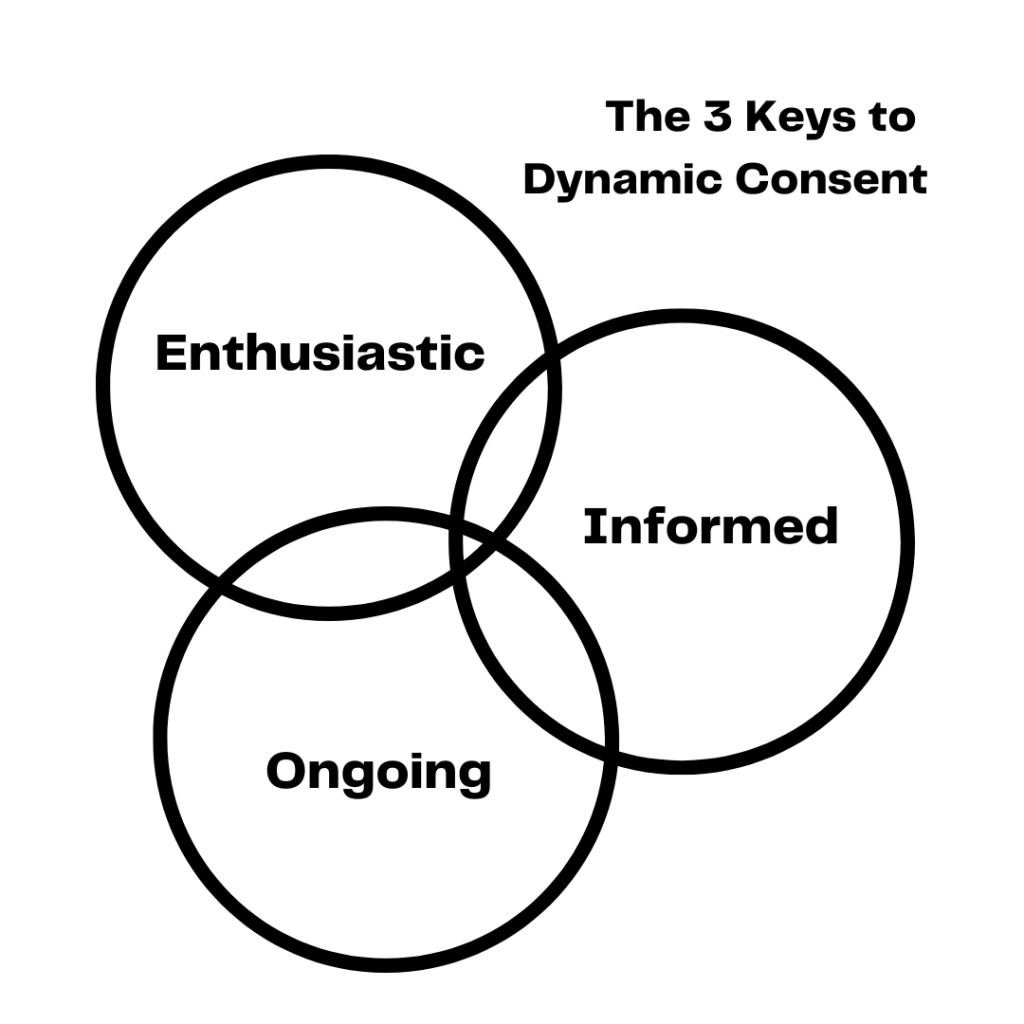
We’re still finding our way with dynamic consent in yoga and other wellness industries. Let’s touch on the limits of current consent strategies, define true dynamic consent, and start to map a path forward.
Born from a desire to do better, a wave of new products and policies swept through yoga studios. Flip chips and color-coded cards provide a jumping off point for building consent culture. Asking people at the beginning of class also became popular. Entire studios became “touch free.” While I’m grateful to see our awareness grow, these approaches have serious limitations.
A yoga teacher must take into consideration peer and power dynamics and the prevalence of trauma, dysregulation, and disempowerment in our society. Some folks might default to opting in as an act of belonging, when internally they feel unsure about engaging with a teacher. Others might opt out completely, but then feel disappointed after witnessing others receive praise or contact in a group class.
When new students drop-in, or a group’s needs vary, many unknowns make tracking consent challenging. Building rapport over time allows us to better assess the capacity of each student to express their choice. For example, I reserve touch for small groups of long-time students, or private yoga therapy where the luxury of time and close relationships exist.
We might also reflect on whether consumers go to yoga expecting hands on touch or to be left alone on their mat to follow verbal cues, or whether they feel equipped to partner with others or confidently decline.
Understanding consent reveals additional implications for social media content, the language in waivers, teacher training and studio policy manuals, what we wear and how we cue. Yoga teaches misperception and ignorance as one root of suffering – avidya. We can no longer bypass these conversations, uphold structures perpetuating abuse, or outsource consent to a static prop or policy.
For all these reasons, I suggest we adopt a methodology of dynamic informed consent.
The 3 keys of dynamic consent
Consent includes three essential qualities: Enthusiasm, Informed, and Ongoing.
Enthusiasm means the exchange is mutually agreeable, with the recipient genuinely on board with what is about to occur. A half-hearted “I guess,” or “Do whatever you want with me,” provides an opportunity for clarifying dialogue.
During trainings and workshops, yoga professionals share how they handle consent. For example, they may say, “Is it ok if I touch you in this pose?” or ask students to raise their hand if they’re “open to receiving touch.” Generalizations leave a lot to the imagination, and informed consent depends on context. Tell the student what you observed and what your goal is in working together. If you intend to use touch, be specific about where and what they can expect. This dialogue takes time, often best suited to a 1:1 environment.
Disclosing consent policies in a waiver or intake form gives a good foundation, yet lacks the context needed for a win-win exchange. Asking as class begins disregards the evolving nature of how the practices affect change. Consent must be an ongoing process. With dynamic consent, we get to change our minds and respond from what’s real in each moment.
When we witness an incongruence in ourselves or our student – a shift in body language, energy or tension suggesting consent isn’t a full YES – we must take the responsibility to pause. We discern how to proceed together, or agree to be complete for now.
We’re growing as a yoga profession, and this practice holds innumerable healing gifts for humanity. Let’s create spaces for the messy, necessary work of rebuilding our fundamental skills of relating and connecting, sensing and moving together with embodied dynamic consent.
Cheri Dostal Ryba devoted two decades to embodied transformation as a movement educator, dancer, C-IAYT yoga therapist, and now author and mother of 2. Cheri’s approach weaves cyclical wisdom from nature with trauma & nervous system informed somatic practice, and integrative pelvic care. Cheri served as co-director and lead faculty of the accredited C-IAYT training AlcheMe Yoga Therapy for 7 years and mentors yoga professionals in personal embodiment and career growth. She serves women globally 1:1 and with online programs, and through her first book, Pelvic Yoga Therapy for the Whole Woman: A Professional Guide.




